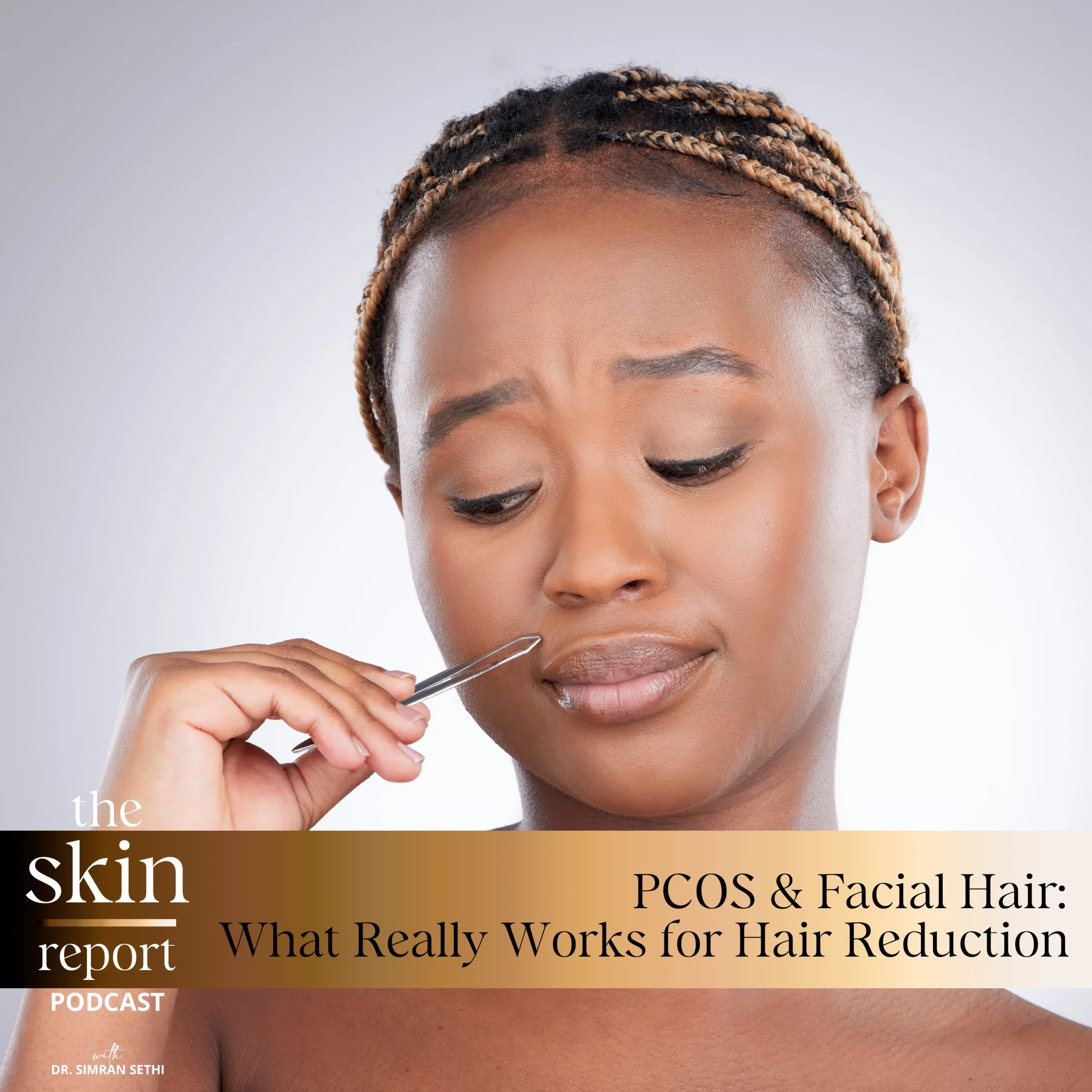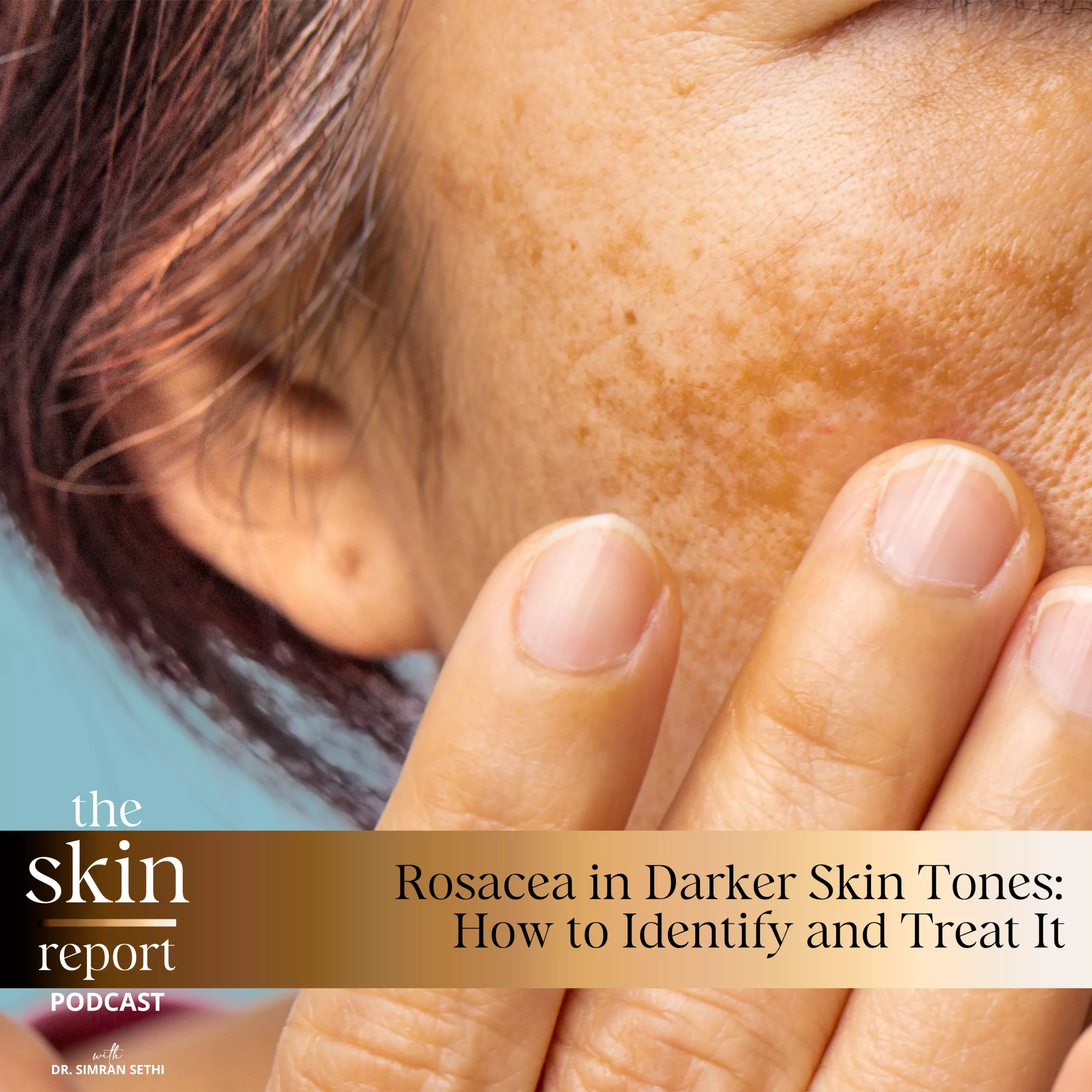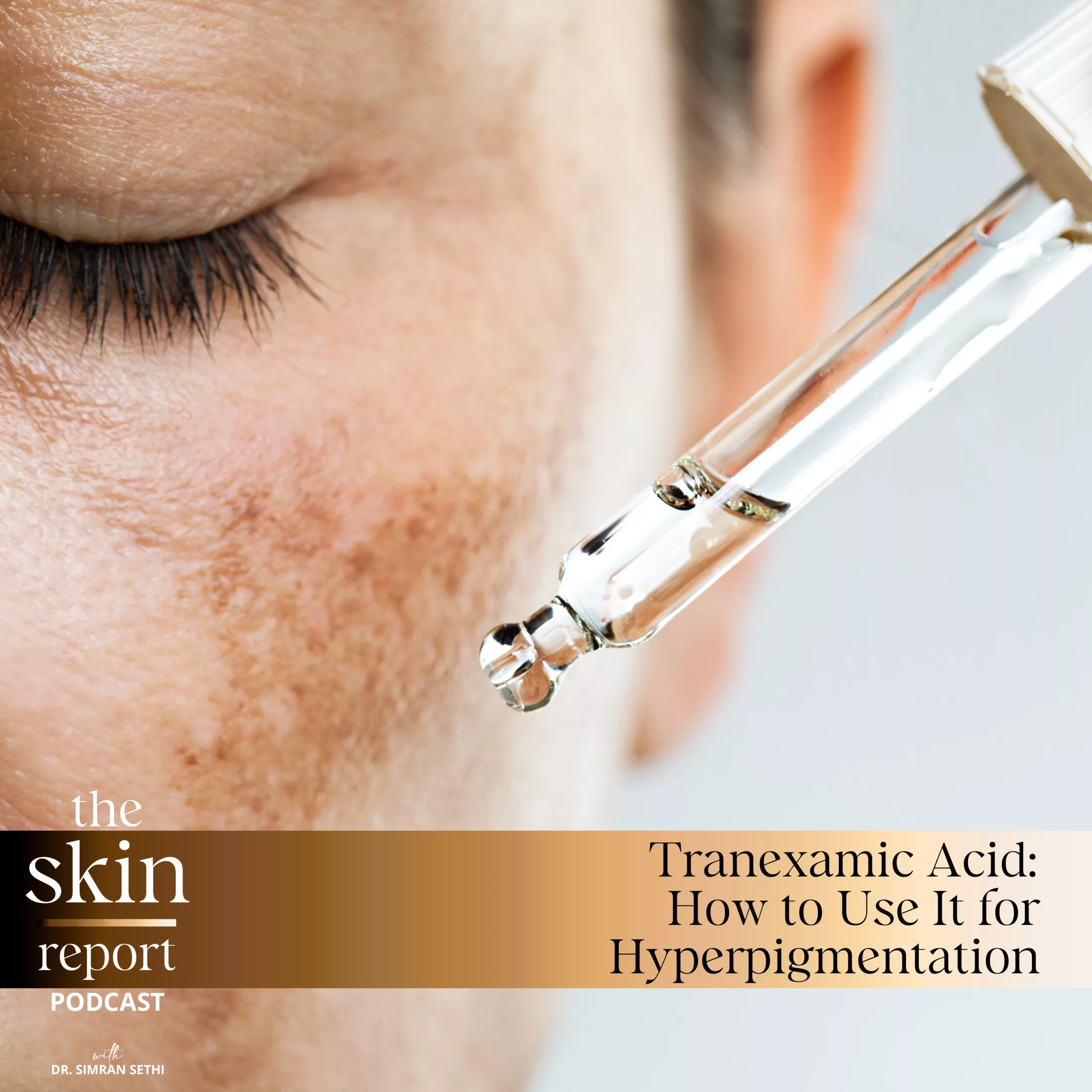Facial Contouring Without Surgery:
Fillers, Botox, and More
In this episode of The Skin Report, Dr. Sethi and Shaheera explore the world of facial contouring, focusing on non-surgical options to achieve a sculpted, youthful look. Dr. Sethi delves into popular treatments like fillers, Botox, and radiofrequency microneedling, breaking down how each works to enhance facial structure. They also discuss the ideal age to start contouring, the difference between filler-based contouring and skin lifting, and when surgery might be the best option. If you’re curious about facial contouring without makeup or are considering treatments to enhance your natural beauty, this episode offers expert insights and practical advice to help you make informed decisions. Tune in to learn more about achieving that “snatched” look, why fillers shouldn’t be permanent, and how to avoid common mistakes.
Exclusive Offer for the Skin Report Audience:
Use SKINREPORT20 in the shopping cart to receive 20% discount
LEARN MORE!
The Skin Report Podcast : Subscribe and Download!
Skin By Dr. Sethi – Blog
Skin By Dr. Sethi – Skincare
Skin By Dr. Sethi – Beauty Instagram
Dr. Sethi’s Medical Spa
Dr. Sethi’s Medical Spa – Instagram
Dr. Sethi:
Welcome to The Skin Report. Today we are going to talk about facial contouring, skin lifting, tightening without surgery. So hi, Shira.
Shaheera:
Hi.
Dr. Sethi:
I know you were very interested in this topic, because you have quite a few friends who are asking about contour, facial contouring, not with makeup, but with medical aesthetic treatment.
Shaheera:
When I said I’m asking for a friend-
Dr. Sethi:
You’re actually asking for yourself, and you don’t have to be embarrassed.
Shaheera:
I am also asking for myself. There are a few ways you can get the contoured, snatched, lifted results. They are also very various ages. What does facial contouring mean to you from your medical aesthetics point of view?
Dr. Sethi:
So I actually really enjoy doing facial contouring procedures.
Shaheera:
You’re very good at it.
Dr. Sethi:
I think they’re a lot of fun because they… I actually get small enhancement that makes a huge difference in how somebody looks and feels. And sometimes when I finish doing a facial contour, I’m like, “Wow,” I mean, I did not think that it would make such a nice impact on that person. And it’s an enhancement. Nobody sees that person goes, “Oh my God, who are you?” So it just makes people’s confidence soar.
When we think about facial contouring, you can do it at a very young age. And what I mean by that-
Shaheera:
What age?
Dr. Sethi:
Yeah, even in your 20s.
Shaheera:
I was like, “Not 10.”
Dr. Sethi:
Not 10. Yes. We have to be very careful when we say young because there are young people who are 10, going and buying anti-aging products.
Shaheera:
Right.
Dr. Sethi:
So yes. But when I say facial contouring in young ages, I see a lot of people, men and women in their 20s who may have a recessed chin, which makes their jawline not look as snatched, right? Or they have just sort of a genetic sort of looseness in the area underneath their chin. And believe it or not, fillers using, I like to use Juvederm Voluma and Volox. Using fillers to contour the jawline has beautiful results. Typically, these fillers last two years, you don’t have to come in and do this frequently.
Shaheera:
What do they feel like when they’re in that area? You have bone there, obviously.
Dr. Sethi:
Yeah, so we actually inject on top of the bone, we sort of deposit the filler, which is a gel-like substance on top of the bone underneath the muscle in this jawline area. And it incorporates into the area and we instantaneously can see the results, which is great. And yeah, initially for a few days, people do experience a little bit of pressure. It’s a foreign substance, but then it accommodates in the area. So that’s one form of contouring is that jawline contouring.
There are also a lot of people who naturally just have, maybe they’re on the leaner side and they naturally don’t have a lot of sort of fullness in their cheeks, which gives a refresh youthful appearance, or they have maybe a narrower more square or rectangular face.
Shaheera:
They don’t have that obvious dimension of a-
Dr. Sethi:
Track where you have more volume hair and then slims down. That’s another type of facial contouring that looks beautiful, putting a conservative amount of filler, two to three syringes, which is not a lot, it’s two to three ml in the cheek, can really give you a nice sort of natural enhancement and make you look more contoured in the lower cheek area. Sometimes I will inject people with Botox in their masseter muscle, which helps sort of slim the face further. It looks beautiful.
It’s a great way to also, if you’re grinding your teeth, to stop that.
So when it comes to facial contouring, even as early as your 20s, you can do some great things. I like to have people wait until they’re in their mid-20s because our face continues to change. And that’s why it’s important to let your face do its thing, grow and wait until I think mid-20s to make a lot of these changes. And if you hate the work, you can always dissolve it. That’s the other good thing about fillers, so.
Shaheera:
You can’t solve it… Having before and afters from the provider is huge.
Dr. Sethi:
Yes. Yes, their work and their style of work-
Shaheera:
Because we don’t want to because it is totally a fun, instant gratification. You feel so… It is, it’s really like uplifting, no pun intended or pun intended, but you do want to make sure that the results are great. You do want to make sure that it has a nice multi-beneficial thing, knowing that you can raise your cheekbone and it also may help with the hollowness around your eyes or something. Those are really wonderful things. So those are for injectables. Now, for the more advanced treatments.
Dr. Sethi:
Like when people are aging and things, or maybe somebody who doesn’t like injectables. So if someone says, “You know what? I just do not want to do an injectable.” There are some other options, but it depends on what age group you’re in or how advanced the laxity in the face is. So general rule of thumb, you do not want to use fillers to lift skin. That is what’s going to make you look odd. They’re not designed for that. Fillers are designed for contouring. They’re designed for filling areas of deficit to some extent. You cannot just remove areas of deficit with a filler because that deficit was caused by skin sagging. And I’m going to give you a specific example. When people start seeing deeper nasolabial folds, and those of you who are just listening to us, and if you go to our YouTube video, you can see an example of that.
But those deep nasolabial folds, a lot of people will say, “I need to get filler there. I don’t want those.” “Okay, well, how did that happen?” It happened because you started aging, losing fat in your cheeks, and it moved downward and cause this fold to get deeper. Now, if you go and just inject there or inject a lot there and not address the lift here, when that person smiles, they won’t be able to actually smile properly. And that’s a dead giveaway that you have too much filler in your nasolabial folds. That’s a provider issue. They should be assessing for, “Why does this person have a deficit or a deep fold?” Now, if you can get away with filler in your cheeks and nasolabial folds to some extent, usually if you’re starting to see these changes in your 30s, 40s, and again, your skin tone matters, people with lighter skin tones do experience more fat loss in the face, more sagging.
After that, I would say treatments like microneedling with radio frequency, all therapy, Sculptra, they do help. But if you have a lot of loss of volume in your cheeks, you have quite a bit of jowling and your jawline just doesn’t look as sharp or snatched as it used to. Honestly, I think, non-surgical options are not going to be effective. And that’s when you really should consider plastic surgery.
Shaheera:
Is that because the… I know you love the idea of really introducing collagen, skin renewal, active ingredients through skincare. That’s a huge thing. I think when I believe that somebody, based on what you’re describing is when you get to a point where you’re like, now you need a surgical procedure to lift, are there preventative measures?
Dr. Sethi:
They help to some extent. And that’s why we don’t inject silicone permanently into… we don’t give people permanent chin implants or cheek implants because their face will age around that implant. That’s why fillers should not be permanent. And also when you are needing… Just because your filler look nice on you in your 30s doesn’t mean it’s going to look right on you in your 40s or 50s. And a filler… I do encounter the situation sometimes in my clinic because there are people who are like, “Oh, I’m here for my annual cheek filler.” It’s like, “No fillers build on each other.” So even though they diminish over time, they still, some is still left behind.
MRI scans of people’s faces with filler have been done and some of it, it stays. So you are building on top of that and it’s a filler, it’s not a flu shot. You don’t need it every year. So you really have to assess the face properly. And when somebody is… If somebody’s pulling their face up like this and there’s a lot of laxity in the skin, then they are a better candidate for surgery. And every medical aesthetic provider who is in the nonsurgical space should know when their patient is a candidate for surgery so they’re not unnecessarily doing procedures that won’t even give much of a result.
Shaheera:
Right, exactly. And I think that’s important to being transparent about, which is like, “Yeah, this may not work for you. You may really need this.” There is also maintenance on surgical procedures. But again, I always feel like I’m like, people really miss out on amazing, amazing results and maintenance because they’re not using the right products for the skin.
Dr. Sethi:
Yes, skincare, collagen boosting, collagen banking at any point in your life is going to make your results if you do go into surgery much, much more superior. Remember, a woman with damaged skin who gets a facelift will just look like an older woman who got a facelift versus looking younger, which is the goal. And that’s why when it comes to nonsurgical sort of facelift, there’s sort of a window of opportunity. You can achieve it conservatively, but you can definitely hold off on surgery if you’re doing collagen induction, collagen banking with skincare, collagen induction treatments like microneedling, lasers earlier in life. And finally, if you do need surgery, rely on it. Don’t say, “Well, what else can I do? Can I still do a little bit of filler or can I do threads?” That’s a whole other topic. We won’t discuss it today, but there are reasons why I don’t like doing threads because they actually make your facelift, if you do go into one, more complicated. So yes, just do this instead, save up for surgery and get the results you actually want.
Shaheera:
I think we’ve covered a lot. And I also am really interested if people have comments, questions. I would be so interested in knowing what they are interested in having lifted or sculpted. Were a lot of people who have things from Bell’s palsy, things that are like-
Dr. Sethi:
Yes, exactly.
Shaheera:
… concerned that they’re like, “I really want to do this. What can I do?” I feel people should be super open to asking that or emailing us if they want a little bit more privacy.
Dr. Sethi:
More privacy, yes.
Shaheera:
But I think we can talk about this for a long, long time, but also I would love to sit with you and talk to you and even on a screen show the difference between a surgical, non-surgical, your own before and afters of your clients and some really, really cool transformative.
Dr. Sethi:
Yeah. And we’re going to do that in a lot of our videos.
Shaheera:
Yeah. Yep. Thank you.
Dr. Sethi:
Thank you.
Thank you everyone for listening today. And if you enjoyed this content, please like, subscribe and interact with us through comments.











